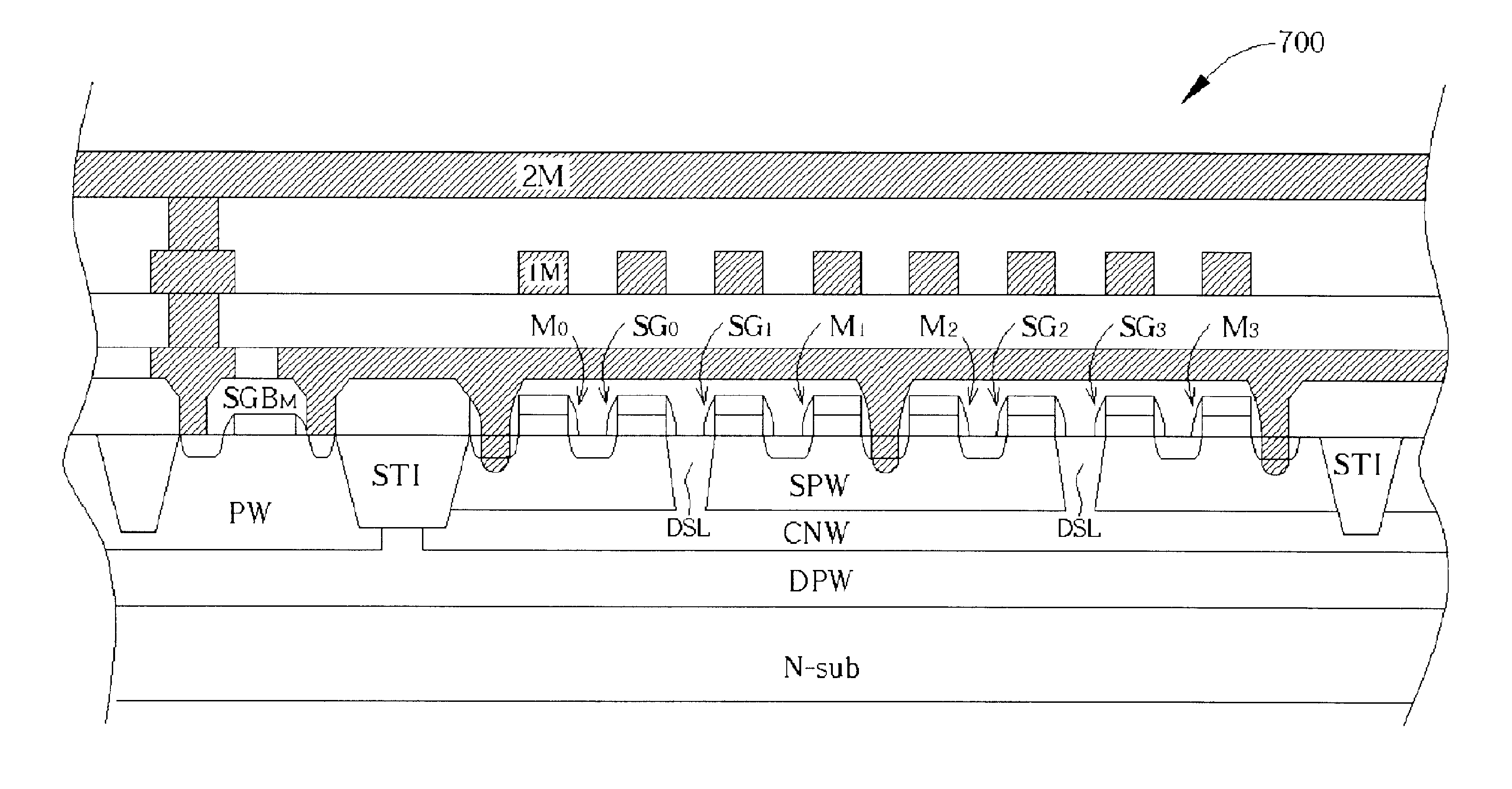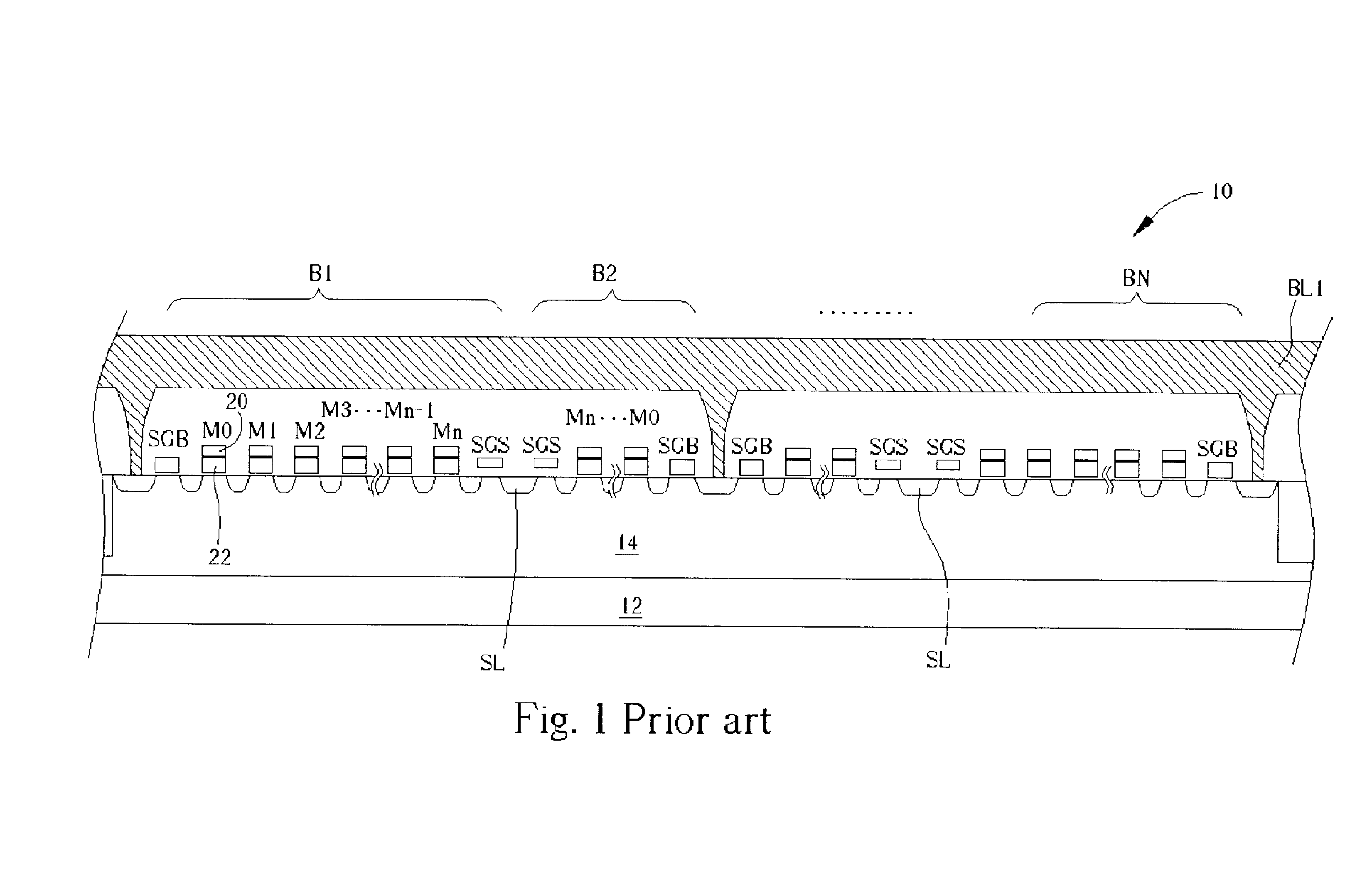EEPROM with source line voltage stabilization mechanism
a voltage stabilization mechanism and source line technology, applied in semiconductor devices, instruments, electrical equipment, etc., can solve the problems of reducing the duration of batteries used in digital products, decelerating programming speed, and very high power consumption of prior art nand type eeprom b>10/b>, etc., to prolong the duration of batteries of portable electric equipment
- Summary
- Abstract
- Description
- Claims
- Application Information
AI Technical Summary
Benefits of technology
Problems solved by technology
Method used
Image
Examples
Embodiment Construction
[0036]Referring to FIG. 2(a), a portion of an EEPROM 100 is shown in a cross-sectional view according to the first preferred embodiment of this invention in which only two series connected NAND memory cell blocks B1 and B2 are illustrated for the sake of simplicity. As shown in FIG. 2(a), the EEPROM 100, which is based on a novel low-voltage bi-directional FN write / erase NAND type flash memory array architecture, comprises a deep P-well (hereinafter referred to as “DPW”), a cell N-well (hereinafter referred to as “CNW”), a plurality of columns of shallow P-wells (hereinafter referred to as “SPW”). Each of the plural columns of shallow P-wells, which serve as a buried local bit line during operations, is isolated from each other with shallow trench isolation (STI) regions, which are not explicitly denoted in FIG. 2(a). To isolate the shallow P-wells from each other, the thickness of the STI layer is greater than the well depth of the shallow P-wells. It is understood that only one of...
PUM
 Login to View More
Login to View More Abstract
Description
Claims
Application Information
 Login to View More
Login to View More - R&D
- Intellectual Property
- Life Sciences
- Materials
- Tech Scout
- Unparalleled Data Quality
- Higher Quality Content
- 60% Fewer Hallucinations
Browse by: Latest US Patents, China's latest patents, Technical Efficacy Thesaurus, Application Domain, Technology Topic, Popular Technical Reports.
© 2025 PatSnap. All rights reserved.Legal|Privacy policy|Modern Slavery Act Transparency Statement|Sitemap|About US| Contact US: help@patsnap.com



